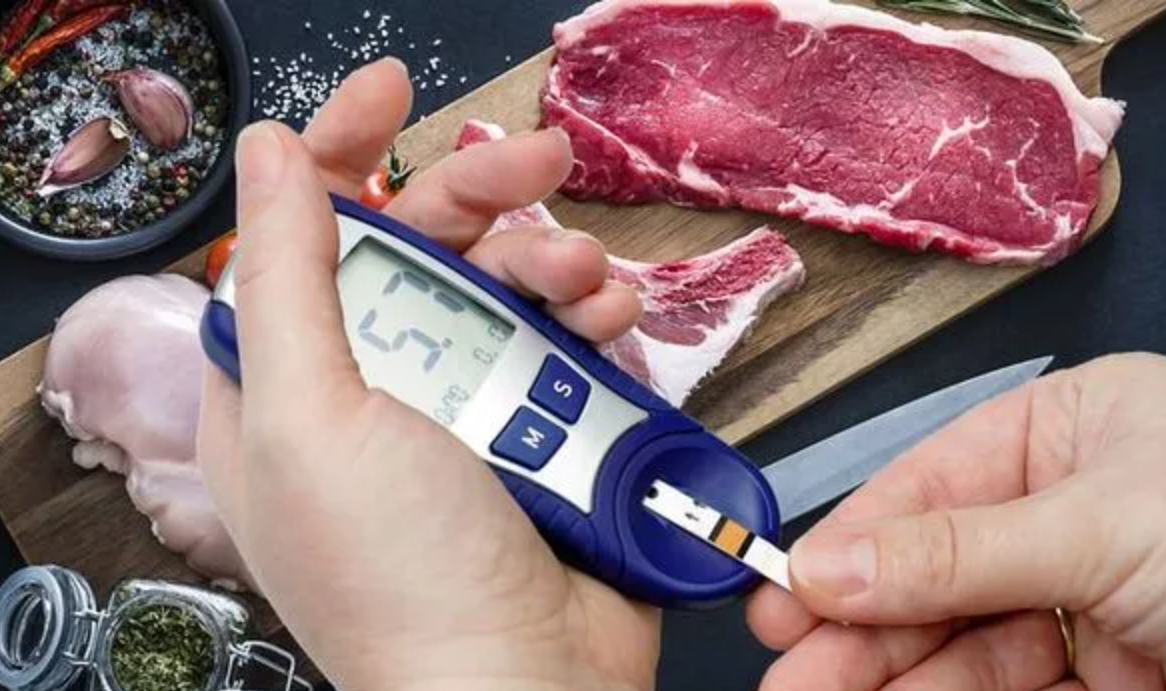Heme iron in red meat linked to increased type 2 diabetes risk
Researchers identified a significant link between heme iron and risk of type 2 diabetes as well as the metabolic pathways underlying the link.

This multifaceted approach allowed the researchers to delve deeper into the relationship between iron intake and diabetes risk, revealing potential metabolic pathways that link the two. (CREDIT: Getty Images)
A recent study led by researchers at Harvard T.H. Chan School of Public Health has found a profound link between the intake of heme iron, primarily found in red meat and other animal products, and an increased risk of developing type 2 diabetes (T2D).
Unlike non-heme iron, which is predominantly found in plant-based foods, heme iron appears to be a key factor in raising diabetes risk. While previous research hinted at this connection, the current study offers a more detailed understanding of how heme iron contributes to the development of T2D.
The study’s lead author, Fenglei Wang, a research associate in the Department of Nutrition, highlighted the comprehensive approach of the research. “Compared to prior studies that relied solely on epidemiological data, we integrated multiple layers of information, including epidemiological data, conventional metabolic biomarkers, and cutting-edge metabolomics,” Wang explained.
This multifaceted approach allowed the researchers to delve deeper into the relationship between iron intake and diabetes risk, revealing potential metabolic pathways that link the two.
Published in Nature Metabolism, the study draws on 36 years of dietary reports from 206,615 adults involved in the Nurses’ Health Studies I and II and the Health Professionals Follow-up Study. These reports provided insight into participants’ consumption of various forms of iron—total, heme, non-heme, dietary, and supplemental—and their T2D status, all while accounting for other health and lifestyle factors.
The research team didn’t stop at just tracking iron intake. They also examined the biological mechanisms that could explain the connection between heme iron and T2D. Among smaller groups of participants, the researchers analyzed plasma metabolic biomarkers, including those linked to insulin levels, blood sugar, blood lipids, and inflammation.
Additionally, they studied the metabolomic profiles of some participants, which involve plasma levels of small-molecule metabolites derived from bodily processes like food digestion.
Related Stories
The findings are striking: participants with the highest intake of heme iron had a 26% higher risk of developing T2D compared to those with the lowest intake. The study also revealed that heme iron contributes to more than half of the T2D risk associated with unprocessed red meat and plays a moderate role in the risk tied to several diabetes-related dietary patterns. In contrast, no significant association was found between non-heme iron intake—whether from diet or supplements—and the risk of T2D.
Further analysis showed that higher heme iron intake was linked to blood metabolic biomarkers that are associated with T2D. Specifically, increased levels of C-peptide, triglycerides, C-reactive protein, leptin, and markers of iron overload were observed in those with higher heme iron intake. At the same time, lower levels of beneficial biomarkers, such as HDL cholesterol and adiponectin, were noted.
The study also identified a dozen blood metabolites, including L-valine, L-lysine, uric acid, and various lipid metabolites, that might play a role in the relationship between heme iron intake and diabetes risk. These metabolites have been previously linked to T2D, further supporting the study’s findings.
On a broader scale, these findings carry significant implications for dietary guidelines and public health strategies aimed at reducing diabetes rates. The results raise concerns about the growing popularity of plant-based meat alternatives, which often contain added heme to mimic the taste and appearance of real meat. While these products are gaining traction among consumers, the potential health impacts of added heme warrant further investigation.
“This study underscores the importance of healthy dietary choices in diabetes prevention,” said Frank Hu, Fredrick J. Stare Professor of Nutrition and Epidemiology and the study’s corresponding author. Hu emphasized that reducing heme iron intake, particularly from red meat, and adopting a more plant-based diet could be effective strategies for lowering the risk of diabetes.
However, the researchers acknowledged certain limitations in their study, such as the potential for incomplete accounting for confounders and possible measurement errors in the epidemiological data. Additionally, because the study population was predominantly white, the findings need to be replicated in other racial and ethnic groups to ensure broader applicability.
In light of these findings, it’s clear that dietary choices, particularly regarding the consumption of red meat and animal products, play a crucial role in managing diabetes risk. As more research emerges, it may guide public health policies and individual decisions toward healthier dietary practices that could mitigate the growing burden of type 2 diabetes.
Note: Materials provided above by The Brighter Side of News. Content may be edited for style and length.
Like these kind of feel good stories? Get The Brighter Side of News' newsletter.
Joshua Shavit
Science & Technology Writer | AI and Robotics Reporter
Joshua Shavit is a Los Angeles-based science and technology writer with a passion for exploring the breakthroughs shaping the future. As a contributor to The Brighter Side of News, he focuses on positive and transformative advancements in AI, technology, physics, engineering, robotics and space science. Joshua is currently working towards a Bachelor of Science in Business Administration at the University of California, Berkeley. He combines his academic background with a talent for storytelling, making complex scientific discoveries engaging and accessible. His work highlights the innovators behind the ideas, bringing readers closer to the people driving progress.



